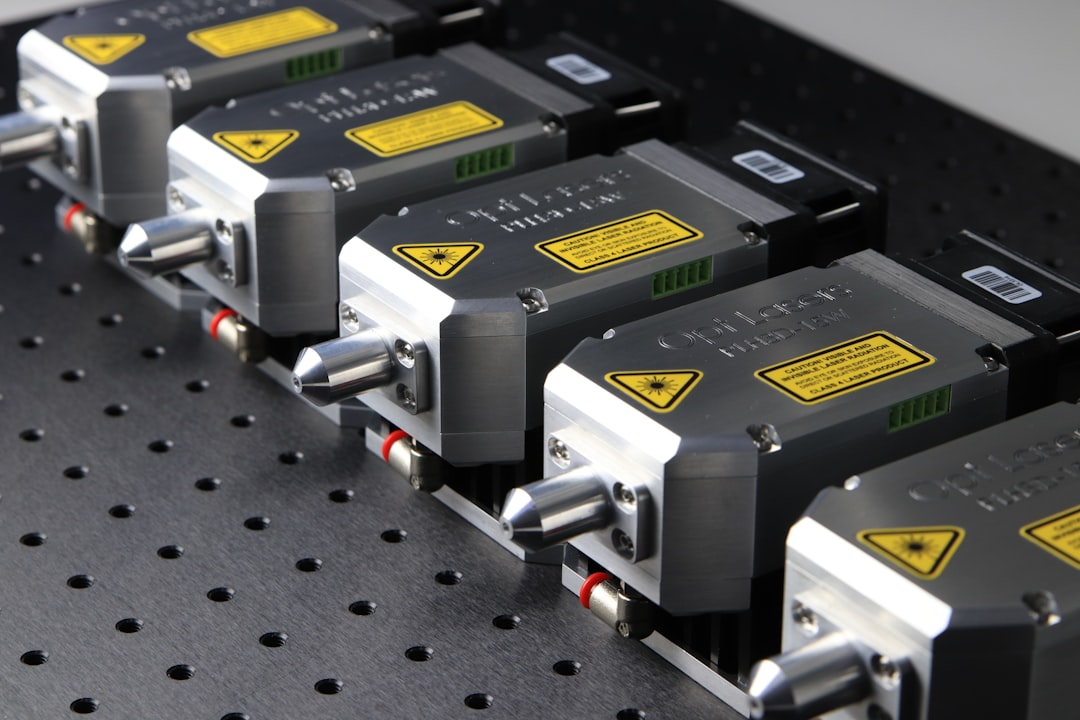When you decide to undergo laser hair removal, it’s essential to have a clear understanding of the process and what you can expect. This advanced technique utilizes concentrated beams of light to target and destroy hair follicles, effectively reducing hair growth over time. As you prepare for your sessions, you may find it helpful to know that the procedure is generally quick, with most sessions lasting anywhere from a few minutes to an hour, depending on the area being treated.
You might feel a slight tingling sensation or a rubber band snap against your skin during the treatment, but many find it tolerable. The results of laser hair removal can be quite impressive. After a series of treatments, you may notice a significant reduction in hair growth, with many individuals experiencing permanent hair loss in the treated areas.
However, it’s important to remember that results can vary based on factors such as hair color, skin type, and the area being treated. You should also be aware that multiple sessions are typically required to achieve optimal results, as hair grows in different cycles. Understanding these aspects will help you set realistic expectations and prepare for the journey ahead.
Key Takeaways
- Laser hair removal targets hair follicles to reduce hair growth over time
- Shave the treatment area before the session and avoid sun exposure
- Apply soothing creams and avoid hot showers after treatment
- Redness and irritation are common side effects, but usually subside within a few days
- Use sunscreen and gentle skincare products to protect treated skin and prevent complications
Preparing for Laser Hair Removal: Pre-treatment Tips
Preparation is key when it comes to laser hair removal. Before your first appointment, you should schedule a consultation with your practitioner to discuss your goals and any concerns you may have. During this meeting, your provider will assess your skin type and hair color to determine the best laser technology for your needs.
It’s also an excellent opportunity for you to ask questions about the procedure and what to expect during and after treatment.
First, avoid sun exposure and tanning beds, as tanned skin can increase the risk of complications during treatment.
You should also refrain from waxing or plucking hair in the area you wish to treat for at least four weeks prior to your session, as these methods can disrupt the hair growth cycle that laser hair removal relies on. Instead, shaving is recommended, as it allows the laser to effectively target the hair follicle without interfering with its growth.
Aftercare for Laser Hair Removal: Post-treatment Care Instructions

After your laser hair removal session, proper aftercare is crucial for ensuring optimal results and minimizing any potential side effects. Immediately following the treatment, you may notice some redness or swelling in the treated area, similar to a mild sunburn. This is completely normal and should subside within a few hours to a couple of days.
To soothe your skin, you can apply a cold compress or aloe vera gel, which can help alleviate discomfort and promote healing. In the days following your treatment, it’s essential to keep the area clean and moisturized. You should avoid hot baths, saunas, and intense workouts for at least 24 hours post-treatment, as excessive heat can irritate the skin further.
Additionally, refrain from using harsh skincare products or exfoliants on the treated area until your skin has fully healed. By following these aftercare instructions diligently, you can enhance your results and ensure a smoother recovery process.
Managing Side Effects: Dealing with Redness and Irritation
| Product | Redness Relief | Irritation Relief |
|---|---|---|
| Product A | High | Low |
| Product B | Medium | High |
| Product C | Low | Medium |
While most individuals tolerate laser hair removal well, some may experience side effects such as redness and irritation. If you find that your skin is particularly sensitive after treatment, there are several strategies you can employ to manage these symptoms effectively. First and foremost, avoid scratching or picking at the treated area, as this can lead to further irritation or even infection.
Instead, focus on keeping the area cool and comfortable. Over-the-counter hydrocortisone cream can be beneficial in reducing inflammation and soothing irritated skin. Applying this cream as directed can help alleviate discomfort and promote healing.
If you notice any persistent or severe side effects, such as blistering or excessive swelling, it’s crucial to contact your practitioner for guidance. They can provide tailored advice based on your specific situation and ensure that any complications are addressed promptly.
Protecting Your Skin: Sun Exposure and Skincare After Laser Hair Removal
One of the most critical aspects of post-laser hair removal care is protecting your skin from sun exposure. After treatment, your skin may be more sensitive to UV rays, making it essential to take precautions to prevent sunburn or pigmentation changes. You should avoid direct sunlight for at least two weeks following your session and wear protective clothing when outdoors.
If you must be outside, applying a broad-spectrum sunscreen with an SPF of 30 or higher is vital to shield your skin from harmful rays. In addition to sun protection, maintaining a gentle skincare routine is crucial after laser hair removal. Opt for mild cleansers and moisturizers that won’t irritate your sensitive skin.
Avoid products containing retinoids or alpha hydroxy acids for at least a week post-treatment, as these ingredients can exacerbate irritation. By prioritizing sun protection and gentle skincare practices, you can help ensure that your skin heals properly while maximizing the benefits of your laser hair removal sessions.
Long-Term Maintenance: Follow-up Sessions and Touch-ups
To achieve long-lasting results from laser hair removal, understanding the importance of follow-up sessions is essential. Most individuals require multiple treatments spaced several weeks apart to target hair in different growth cycles effectively. Your practitioner will develop a personalized treatment plan based on your specific needs and goals.
Staying committed to this plan is crucial for achieving optimal results. After completing your initial series of treatments, you may find that occasional touch-up sessions are necessary to maintain smooth skin over time. Factors such as hormonal changes or new hair growth can influence the need for these touch-ups.
Regular follow-ups will help ensure that any remaining hair is effectively treated while keeping your skin looking its best.
Potential Risks and Complications: What to Look Out For
While laser hair removal is generally considered safe, it’s essential to be aware of potential risks and complications associated with the procedure. Some individuals may experience temporary side effects such as redness, swelling, or changes in skin pigmentation. In rare cases, more severe complications like blistering or scarring can occur if proper aftercare isn’t followed or if the procedure is performed incorrectly.
To minimize these risks, it’s crucial to choose a qualified practitioner with experience in laser hair removal. During your consultation, don’t hesitate to ask about their credentials and experience with similar procedures. Additionally, following all pre-treatment and post-treatment care instructions will significantly reduce the likelihood of complications arising.
Final Thoughts: Embracing the Results of Laser Hair Removal
As you embark on your journey with laser hair removal, embracing the results can be incredibly rewarding. Many individuals find that they enjoy smoother skin without the hassle of regular shaving or waxing. The confidence boost that comes from feeling comfortable in your own skin is often one of the most significant benefits reported by those who undergo this treatment.
Ultimately, laser hair removal offers a long-term solution for unwanted hair that can save you time and effort in your grooming routine. By understanding what to expect throughout the process—from preparation to aftercare—you can make informed decisions that lead to successful outcomes. As you witness the transformation in your skin over time, you’ll likely find that embracing this new chapter brings newfound confidence and freedom from traditional hair removal methods.
If you’re interested in learning more about before and aftercare for laser hair removal, be sure to check out this helpful article on inlaserhairremoval.com. This article provides valuable tips and information on how to properly prepare for your laser hair removal treatment and how to care for your skin afterwards. It’s a must-read for anyone considering this popular cosmetic procedure.
FAQs
What is laser hair removal?
Laser hair removal is a cosmetic procedure that uses a concentrated beam of light (laser) to remove unwanted hair. The laser targets the pigment in the hair follicles, damaging them and inhibiting future hair growth.
What should I do before laser hair removal treatment?
Before laser hair removal treatment, it is important to avoid sun exposure and tanning beds for at least six weeks. You should also avoid plucking, waxing, or electrolysis for six weeks prior to treatment, as the laser targets the roots of the hair, which are temporarily removed by these methods.
What should I do after laser hair removal treatment?
After laser hair removal treatment, it is important to avoid sun exposure and tanning beds for at least six weeks. You should also avoid hot showers, saunas, and strenuous exercise for 24-48 hours after treatment to allow the skin to heal.
How long does it take to see results from laser hair removal?
It typically takes 4-6 treatments spaced 4-6 weeks apart to see significant hair reduction. Results vary depending on individual hair type and color, as well as the area being treated.
What are the potential side effects of laser hair removal?
Potential side effects of laser hair removal include temporary redness, swelling, and discomfort in the treated area. In rare cases, blistering, scarring, or changes in skin pigmentation may occur. It is important to follow the aftercare instructions provided by your laser hair removal technician to minimize these risks.






